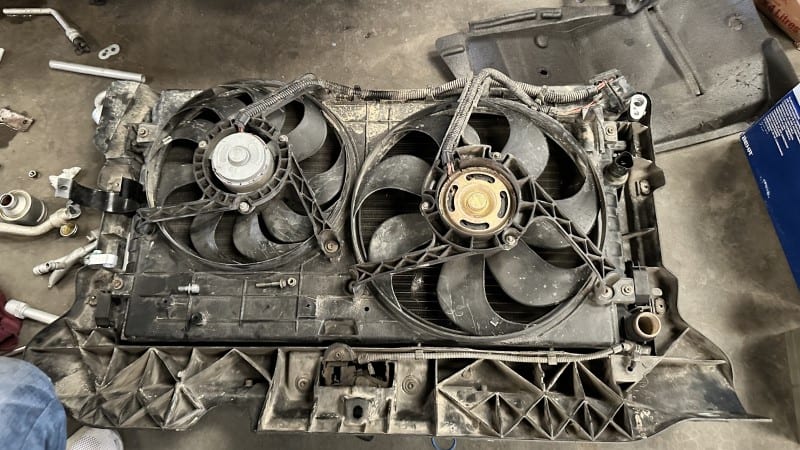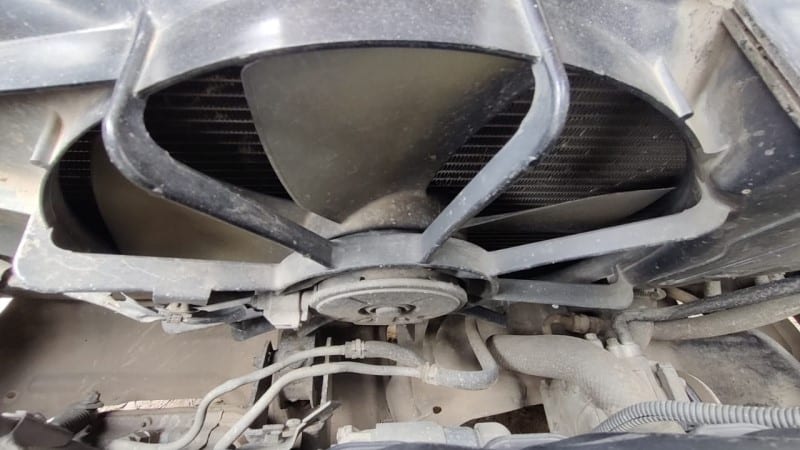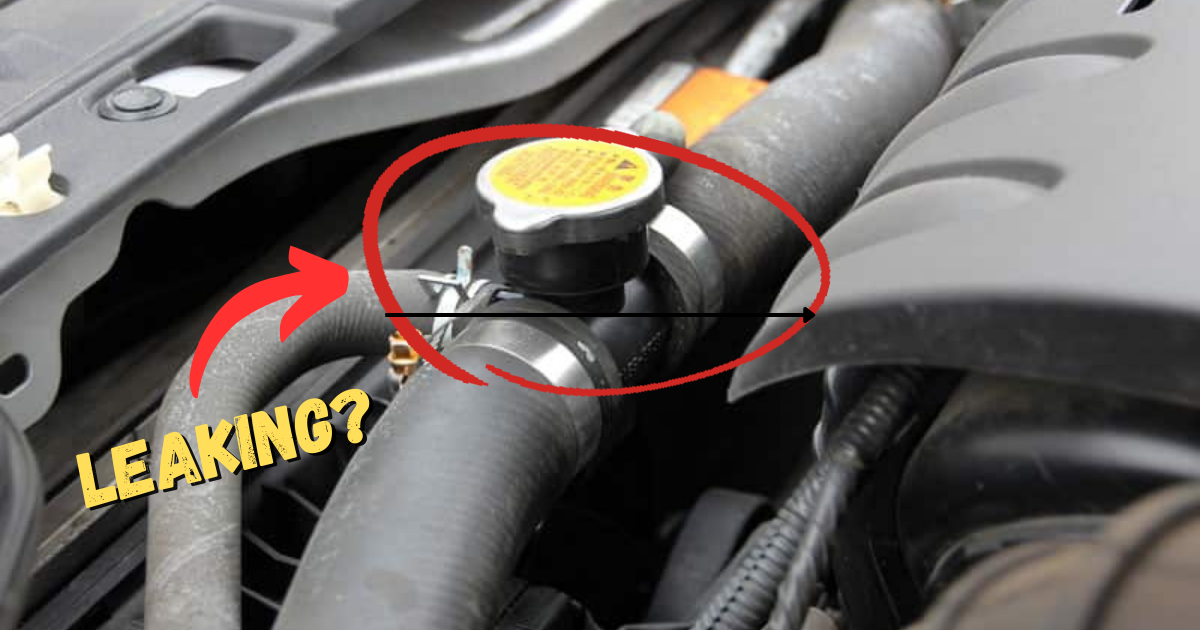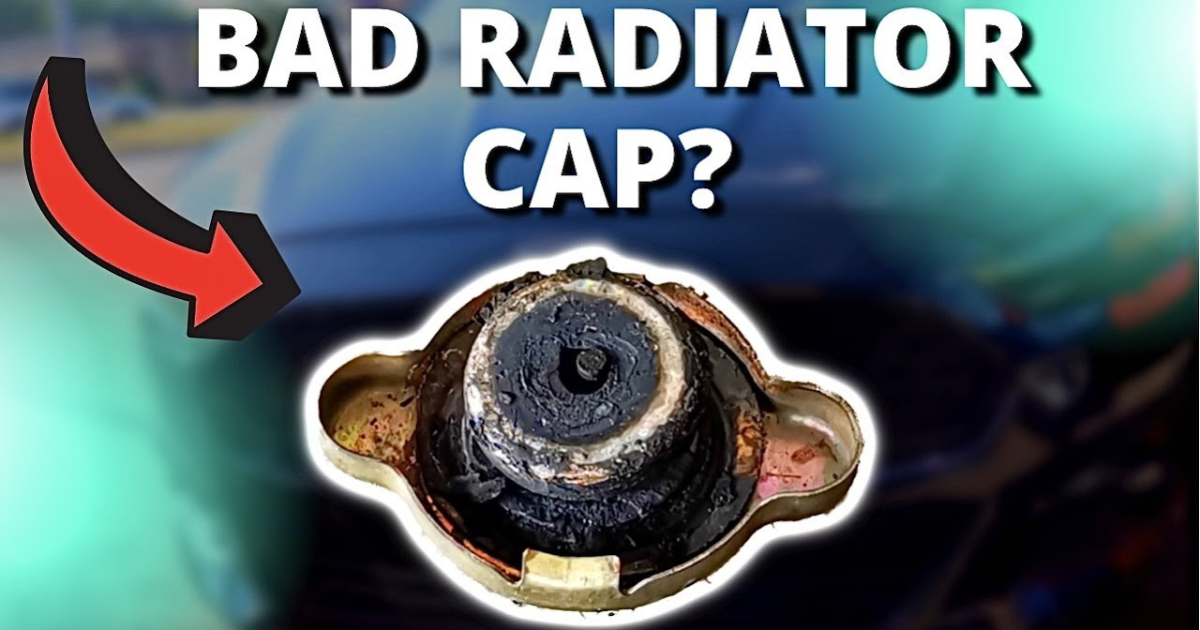When everything is in working order, the combustion process in an automobile engine generates a lot of heat. To keep the engine from getting too hot, automakers use cooling systems. The engine’s ideal operating temperature is maintained by the cooling system, which is its principal function.

When the engine is not hot, why does the radiator fan turn on?
When the engine is cold and the radiator fan is still turning, it’s a sign of a wiring problem. Still, other problems, such as an open thermostat, a broken ECM/ECU, a poor fan relay, or an inaccurate coolant temperature sensor, can be the main culprit.
Let’s take a look at each of these problems separately to see how they can lead to the radiator fan running all the time.
Keeps the thermostat open
The amount of coolant that can enter the engine is regulated by the thermostat. The thermostat stops coolant from entering the engine while it’s cold, letting it warm up.
After the engine reaches a specific temperature, the thermostat is opened to let coolant flow. The engine is kept from getting too hot by the circulation of coolant. Even when the engine is cold, the radiator fan could turn on if the thermostat is stuck open and the fan relay is triggered.
Really bad fan relay
The radiator fan receives its electrical current from the cooling fan relay. It does this by signaling to the fan when to turn it on and off. Once the engine reaches a specific temperature, the relay turns on the fan, and vice versa when the temperature declines.
It is possible for the relay to fail or wear out with time. In such a case, the fan may either never turn on or run continuously regardless of whether the engine is hot or cold.
Thermostat Problem with the Engine
In order to keep the powertrain control module (PCM) informed of the coolant temperature, the engine temperature sensor—also known as the coolant temperature sensor—keeps tabs on the fluid. The PCM is constantly monitoring the coolant temperature and adjusting the fan accordingly.
Therefore, the fan will run continuously if the engine temperature sensor is bad or doesn’t give a signal at all.
The defrosting feature is turning on.
The defrost function may be one of the reasons your cooling fan is turning on when you start your automobile. In order to keep the windows from fogging up, the defrost feature is set to engage automatically at specific temperatures. So, make sure the defrost feature is turned on if the cooling fan turns on when you start the car under specific temperature circumstances.
Engine control unit that is loud
The ECU is the vehicle’s central processing unit. It regulates the cooling system and other vehicle systems. It uses information derived from many automotive sensors to fine-tune the vehicle.
Hardware failure or software errors can cause the ECU to malfunction. The ECU’s behavior will become unpredictable in such a case. A check of the ECU is in order if the radiator fan is continuously on and off. Maybe it’s the bad guy.

Problem Solving: What to Do?
You now know that starting the engine triggers the cooling fan for multiple reasons. Therefore, there are multiple approaches to resolving this issue.
Disable the defrost feature
Because the defrost function is enabled, the fan could be operating regardless of the weather, as previously said. An easy way to fix the issue is to disable the air conditioning.
Check the thermostat and get a new one
To determine if the thermostat is the main source of the issue, you should test it first. Typically, you can find the thermostat near the water pump or towards the top of the radiator hose. Before disconnecting the radiator hose, empty the engine coolant. After that, make sure the thermostat is functioning properly by testing it.
Take the temperature sensor and put a new one in.
It may be the temperature sensor that is malfunctioning. Check the car’s diagnostics to find out what fault codes have been recorded. Engine temperature sensor failure is indicated by P0116 and P0118 codes. You need to find a new one and install it in order to resolve this issue. The head cylinder has the temperature sensor attached to it, near the thermostat housing.
Check for and fix a broken fan motor
The fan motor should be examined if that is where you think the problem lies. The negative battery terminal must be disconnected first. Once that is done, disconnect the fan’s electrical harness and take it out of the engine compartment.
Gather some jumper wires and a battery, then use a voltmeter to check the motor of the radiator fan. Reinstall the fan assembly and replace the fan motor if it’s broken.
Resolve electrical problems by taking a look
Take a look at the radiator fan’s connections and wire harness. Keep an eye out for signs of wear, corrosion, or damage. It is necessary to repair the connectors if any portion of the wire becomes broken.
Conclusion
In conclusion, you should address the electrical problem(s) if the radiator fan continues to run even when the engine is cold. Other potential causes include broken fan motors, thermostats that are jammed open, temperature sensors that aren’t up to snuff, and bad fan relays.
Thankfully, disconnecting the climate controls or getting a new thermostat, coolant temperature sensor, fan motor, or fan relay will fix this problem.





